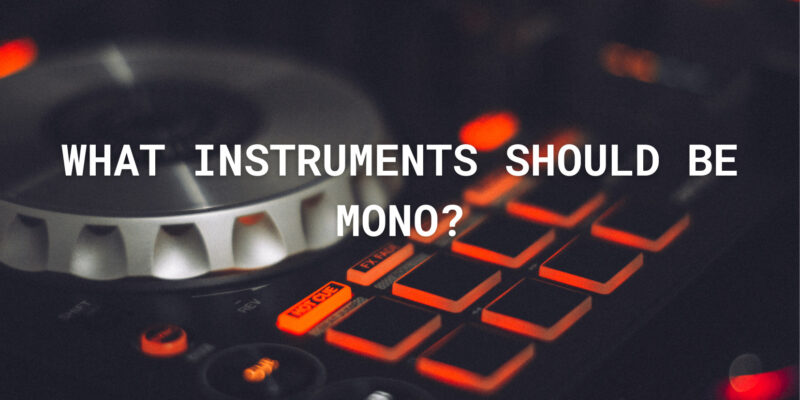In the world of audio production, the decision to use mono or stereo sound is a critical one. While stereo offers a three-dimensional, immersive listening experience, there are instances where monophonic (mono) sound is the preferred choice. Certain instruments and audio sources are best suited for mono reproduction due to their characteristics and intended role in a composition. In this article, we’ll explore a selection of instruments that are well-suited for mono audio, shedding light on why mono can be the ideal configuration.
1. Lead Vocals: The Heart of the Song
The lead vocals are often considered the emotional core of a song. To ensure that the lyrics and emotions are conveyed clearly and directly, lead vocals are typically recorded and reproduced in mono. This approach maintains a centered sound image, allowing the listener to focus on the singer’s performance without the distraction of spatial effects.
2. Dialogues and Narration: Clarity is Key
In audio productions where spoken word content is central, such as podcasts, audiobooks, or radio broadcasts, mono audio is preferred. Monophonic reproduction ensures that the dialogue or narration remains intelligible and easily understandable, regardless of the listener’s playback equipment or environment.
3. Bass Instruments: A Solid Foundation
In many musical genres, the bass instruments, such as the double bass, electric bass guitar, or bass synthesizer, provide the foundation and rhythm of the composition. To maintain a strong and consistent low-end presence, bass instruments are often mixed in mono. This approach ensures that the bass frequencies are focused and do not lose impact in stereo.
4. Kick Drum: Power and Punch
The kick drum is a crucial element in rhythm-driven music genres like rock, hip-hop, and electronic dance music (EDM). Recording the kick drum in mono allows for precise control over its placement in the mix, ensuring that it provides a powerful, centered punch that drives the rhythm of the track.
5. Sub-Bass Frequencies: Deep and Powerful
Sub-bass frequencies, typically below 80 Hz, are felt more than they are heard. These frequencies are essential for creating a sense of depth and impact in electronic music genres. To ensure that sub-bass elements have maximum impact, they are often mixed in mono to maintain a focused and powerful low-frequency foundation.
6. Central Percussion Elements: Clarity in Rhythm
Certain percussion elements, like the snare drum and the hi-hat, are central to the rhythm and groove of a track. Mixing these elements in mono helps maintain their clarity and focus, ensuring that they cut through the mix and provide a solid rhythmic foundation.
7. Monophonic Synthesizers: Analog Warmth
Analog monophonic synthesizers, known for their distinctive and warm sound, are often used in electronic music production. When using monophonic synthesizers, the output is inherently mono. This characteristic is embraced to preserve the unique tonal qualities and ensure that the synthesized sound remains focused and direct.
Conclusion
While stereo sound offers an expansive and immersive listening experience, there are instances where mono audio is the preferred choice. Lead vocals, spoken word content, bass instruments, kick drums, sub-bass frequencies, central percussion elements, and monophonic synthesizers all benefit from monophonic reproduction. Understanding the characteristics and intended role of each instrument empowers audio producers and engineers to make informed decisions about whether mono or stereo audio is the best choice for a particular audio source. When applied thoughtfully, mono audio can enhance clarity, focus, and impact in a mix, contributing to a balanced and well-crafted production.


